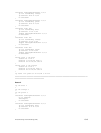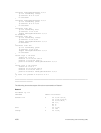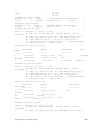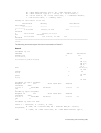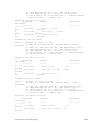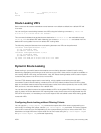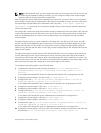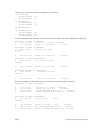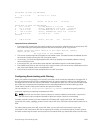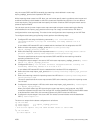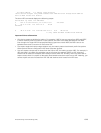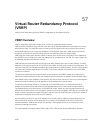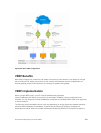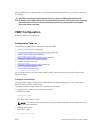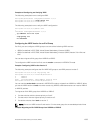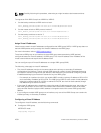
Dell# show ip route vrf VRF-Green
O 33.3.3.3/32 via 133.3.3.3 110/0
00:00:11
C 133.3.3.0/24 Direct, Te 1/13/1 0/0 22:39:61
Dell# show ip route vrf VRF-Shared
O 11.1.1.1/32 via VRF-Red:111.1.1.1 110/0 00:00:10
C 111.1.1.0/24 Direct, VRF-Red:Te 1/11/1 0/0 22:39:59
O 22.2.2.2/32 via VRF-Blue:122.2.2.2 110/0 00:00:11
C 122.2.2.0/24 Direct, VRF-Blue:Te 1/22/1 0/0 22:39:61
O 44.4.4.4/32 via 144.4.4.4 110/0
00:00:11
C 144.4.4.0/24 Direct, Te 1/4/1 0/0 00:32:36
Important Points to Remember
• If the target VRF conatins the same prefix as either the sourced or Leaked route from some other VRF,
then route Leaking for that particular prefix fails and the following error-log is thrown.
SYSLOG (“Duplicate prefix found %s in the target VRF %d”, address,
import_vrf_id) with
The type/level is EVT_LOGWARNING.
• The source routes always take precedence over leaked routes. The leaked routes are deleted as soon
as routes are locally learnt by the VRF using other means.
• For recovery, you must take appropriate action either by deleting the unwanted prefixes or issuing
clear command or both.
• In the target VRF, you cannot leak routes that are imported through the route leaking feature.
• The leaked route points to the next-hop of the source routes. You cannot do any modifications to the
next-hop of the leaked route in the destination VRF.
• IPv6 link local routes will never be leaked from one VRF to another.
Configuring Route Leaking with Filtering
When you initalize route leaking from one VRF to another, all the routes are exposed to the target VRF. If
the size of the source VRF's RTM is considerablly large, an import operation results in the duplication of
the target VRF's RTM with the source RTM entries. To mitigate this issue, you can use route-maps to filter
the routes that are exported and imported into the route targets based on certain matching criteria.
These match criteria include, prefix matches and portocol matches.
You can use the match source-protocol or match ip-address commands to specify matching
criteria for importing or exporting routes between VRFs.
NOTE: You must use the match source-protocol or match ip-address commands in conjunction
with the route-map command to be able to define the match criteria for route leaking.
Consider a scenario where you have created two VRF tables VRF-red and VRF-blue. VRF-red exports
routes with the export_ospfbgp_protocol route-map to VRF-blue. VRF-blue imports these routes into its
RTM.
For leaking these routes from VRF-red to VRF-blue, you can use the ip route-export route-map
command on VRF-red (source VRF, that is exporting the routes); you must also specify a match criteria
for these routes using the match source-protocol command. When you leak these routes into VRF-blue,
Virtual Routing and Forwarding (VRF)
1027



